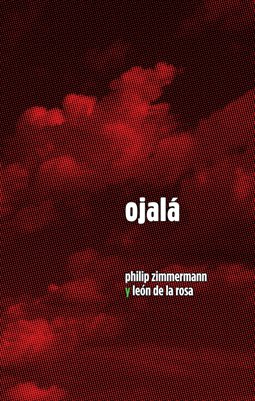Matt Johnston, a PhD candidate at UCA Farnham, in the UK, posted an interesting short essay on the CBAA Bookartheory blog. He teaches at Coventry University. It's titled The Photobook, Lineage and Intent. In it he mentions that he has been working on "taxonomies, histories and spectrums of the photobook". He mentions Jörg Colberg’s Taxonomy of the Photobook (2018), Doug Spowart’s A Spectrum: Photobook to Artists’ Book (2018) and my Photo-bookwork Graphic-Continuum Chart (2016) below.
Although my Photo-bookwork Graphic-Continuum Chart was first published for Tate Shaw's VSW Biennial Photobook Symposium in Rochester in June 2016, it is a subject that Clif Meador and I had been talking about for more than 20 years. As members of CBAA (College Book Art Association), an organization that is heavily comprised of letterpress and printmaking practitioners, we both came out of a photography and photo-offset background. We were constantly astounded by the fact that many traditional artists' and artists' book publishers knew almost nothing about artists' books that used photography and vice versa. (We used the term that Alex Sweetman coined in the 1980s, photo-bookworks, for photobooks that were authored by the individual photographer and that used the book form as a creative medium, rather than merely a vessel for containing multiple single photographic images.)
My Photo-bookwork Graphic-Continuum Chart was aimed at photographers who make photobooks, and was specifically addressed to the presenters and audience of the 2016 VSW Photobook Symposium in Rochester NY, directed by Tate Shaw. (I was a presenter.) I thought that breaking down all of the types (typologies) of photobooks, from the most boring monograph or catalog on one end of the spectrum, to photo-bookworks (artists' books) that really took advantage of the book as vessel and medium, on the other end. The photographers, hopefully, could see all of the ways the photobook could be conceived and understood. To illustrate this, I gave specific examples from my large library of photobook and photo-bookworks. My Powerpoint presentations have been less about identifying characteristics (as was discussed and shown ad nauseum in the continuum chart) and more concerned with broader types in the history of the photobook.
Over the years, Clif and I made a concerted effort to try to bridge the two worlds of photo-bookworks and traditional artists' books by an endless series of Powerpoint presentations to both the CBAA crowd and to the Society for Photographic Education (SPE) folks, using every chance that we could. We always felt that even with our missionary zeal, we were just knocking our heads against a wall.
The last time I gave my taxonomy lecture to a broader photographic audience was in Chicago at the 2013 SPE National Conference, where I presented it to the SPE Educational Forum on teaching photobooks. It was intended as an aid to university professors on how to present and teach the subject. As is well-known, photobooks have become increasingly popular with photo students. That same trip to Chicago, I presented a slightly different version of the taxonomy lecture to Professor Judy Natal's MFA Photography class at Columbia College Chicago, this talk aimed not at teachers but to MFA students. It had many more historical references.
I have also given a newer version of this same lecture at Mary Virginia Swanson's Master Class for professional photographers every January here in Tucson. Later this month, I will be giving a longer version of this presentation for the photo department of FAMU (The Film and TV School of the Academy of Performing Arts) in Prague, Czech Republic.
I was amused to read some of the articles that Mr. Johnston referenced. The reason for my amusement is that in both Doug Spowart's and Jörg Colbergs' recent articles, they laid out a taxonomy for photobooks a bit similar to the one that I have been showing in those aforementioned Powerpoint lectures since about 2000 or before. The categories are very similar, though there are some differences in wording and subcategories, of which I have many more.
Doug Spowart uses a rather odd color spectrum metaphor for the categories that derives from a quote from Clive Phillpot about refracted "white light". He also has some classifications which seem a little odd, perhaps they are a bit different due to their Australian context. "Emergent Photostream" seems unusual, and the difference between "Innovative Artists' Book" and "Artists' Book Codex" is a little unclear. Johnston tries to distill the categories into a much smaller and broader number of critical "histories" that cover broader areas of interest like The Photographic Album, and The Photo Essay.
I feel that the closest taxonomy to mine is Jörg Colberg's, though his approach to the subject is purely from a photographers view, and I include all artists that use photography. I suppose the reason for the similarities in Colberg's, Spowarts' and Johnston's taxonomic categories is because the categories come from a commonsense analysis of the history and content of photobooks.
My subcategories are a bit more granular, for instance, one example is the use of photography in literature, like that of the work of André Breton (Nadja) and W.G Sewald (Austerlitz). As Johnston comments, one of the most important qualifiers is that of intent in the making of the bookwork, and the underlying conceptual content. For instance, for me, an interesting subcategory of the Photo-Artists' Book/Photobookwork classification, is that of the Conceptual photobook, examples being John Baldessari, Ed Ruscha, Dieter Roth, Sol Lewitt and many others. Jörg Colberg's taxonomy is much more addressed to photographers only and does not include artists, as I mentioned, who use photography, which I think is an important part of the discussion.
What started my discussions with Clif Meador on the taxonomy of photobooks was the frustration we had with the ease that many photographers threw the term artists' books around, plus the fact that most photographers were shockingly ignorant of the field of visual books and the history of the book itself. A number of book artists, including Clif, Tate Shaw, Scott McCarney and Joan Lyons sat in the audience at the first VSW Photobook Symposium in 2010 in Rochester and just smiled at the naïveté and ignorance of a number of the photographers who were presenting their work at that symposium. They clearly knew nothing about the history of the visual book, and were basically re-inventing the wheel. Of course this naïveté works both ways. A very highly-regarded curator at a well-known Special Collections, who prides herself on her vast knowledge of artists' books, confessed to me that she had never heard of Michael Snow or his Cover to Cover, one of the great monuments in the artists' book canon. In fact, with the exception of Ed Ruscha's work, every photo-based artist book that I mentioned was unknown to her.
skip to main |
skip to sidebar

welcome! this blog is designed to be a way to make quick posts and updates to news and announcements about spaceheater editions and my books and activities
How to order Spaceheater Editions books::
You can order most of the books on this blog from me or from:
Vamp and Tramp Booksellers
1951 Hoover Court, Suite 205
Birmingham AL 35226-3606
http://www.vampandtramp.com/finepress/s/spaceheater-editions.html
205.824.2300
To see a large selection of my books go to: www.spaceheat.com or http://spaceheatereditions.com.
________________________
The books below are only available directly from MagCloud:
Vamp and Tramp Booksellers
1951 Hoover Court, Suite 205
Birmingham AL 35226-3606
http://www.vampandtramp.com/finepress/s/spaceheater-editions.html
205.824.2300
________________________
The books below are
About Me

- Philip Zimmermann
- 5467 E. Placita del Mesquite, Tucson AZ 85712, United States
- I am an artist working primarily in the medium of artists' books. I have been making artists' books, usually photographic works, since 1975. I teach at the University of Arizona in Tucson, Arizona. I taught at Purchase College, State University of New York for 24 years until moving out to Arizona in 2008. Please write me for information: pzim(at)spaceheat.com or call me at 520.395.1378 or 520.979.8407. You can also send money using Paypal to pzim(at)spaceheat.com and I will ship you a book directly.




